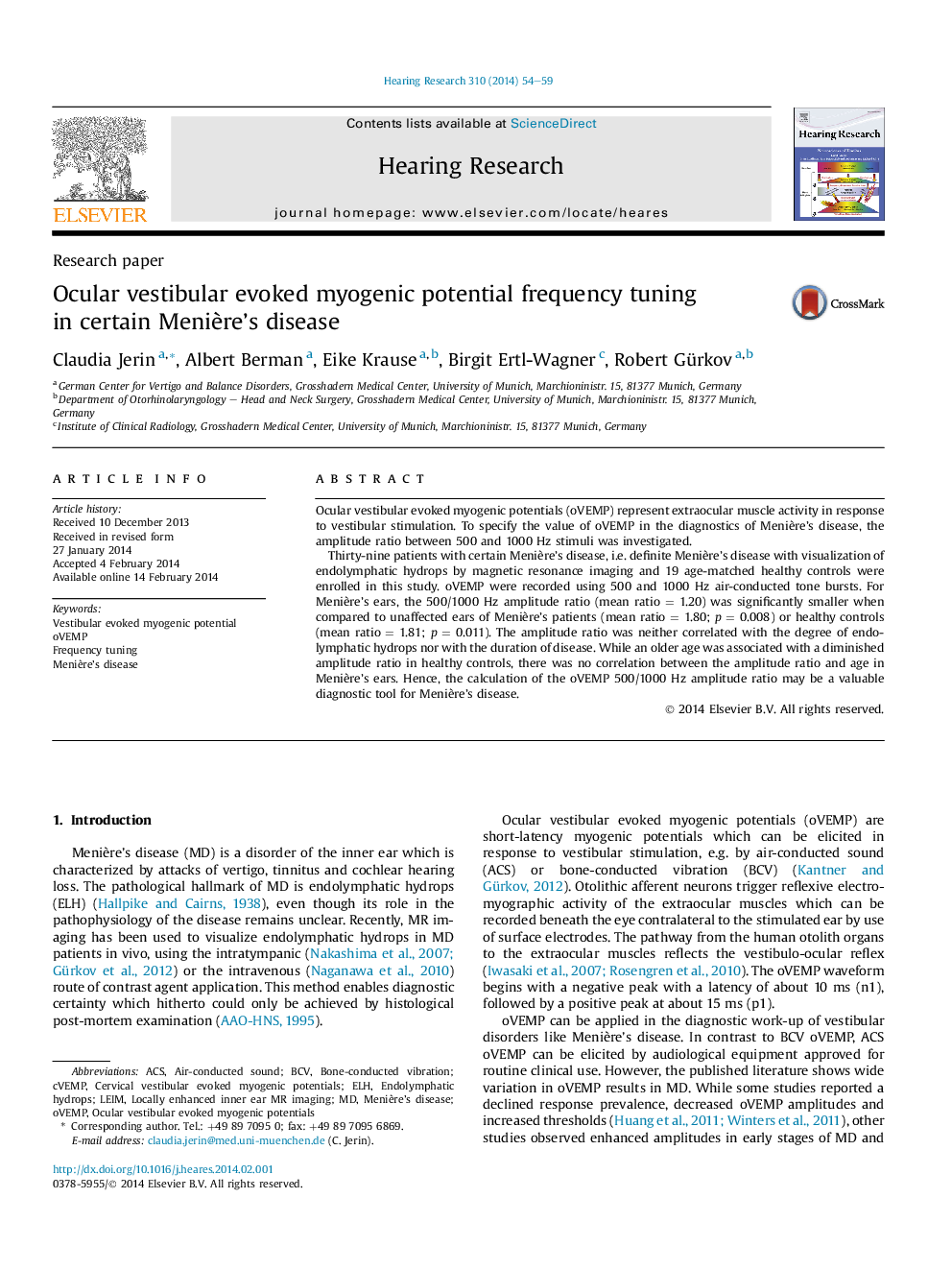| Article ID | Journal | Published Year | Pages | File Type |
|---|---|---|---|---|
| 4355142 | Hearing Research | 2014 | 6 Pages |
•The ratio of the oVEMP amplitude to 500 and 1000 Hz may be diagnostically valuable in Menière's disease.•For Menière's ears, this ratio is significantly smaller compared to contralateral Menière's ears and healthy controls.•There is an association of an older age and a diminished amplitude ratio in healthy controls but not in Menière's ears.
Ocular vestibular evoked myogenic potentials (oVEMP) represent extraocular muscle activity in response to vestibular stimulation. To specify the value of oVEMP in the diagnostics of Menière's disease, the amplitude ratio between 500 and 1000 Hz stimuli was investigated.Thirty-nine patients with certain Menière's disease, i.e. definite Menière's disease with visualization of endolymphatic hydrops by magnetic resonance imaging and 19 age-matched healthy controls were enrolled in this study. oVEMP were recorded using 500 and 1000 Hz air-conducted tone bursts. For Menière's ears, the 500/1000 Hz amplitude ratio (mean ratio = 1.20) was significantly smaller when compared to unaffected ears of Menière's patients (mean ratio = 1.80; p = 0.008) or healthy controls (mean ratio = 1.81; p = 0.011). The amplitude ratio was neither correlated with the degree of endolymphatic hydrops nor with the duration of disease. While an older age was associated with a diminished amplitude ratio in healthy controls, there was no correlation between the amplitude ratio and age in Menière's ears. Hence, the calculation of the oVEMP 500/1000 Hz amplitude ratio may be a valuable diagnostic tool for Menière's disease.
